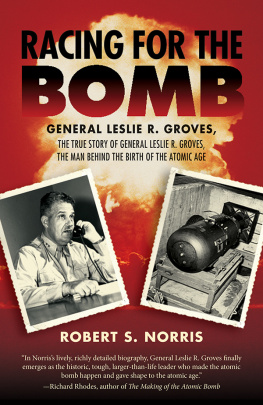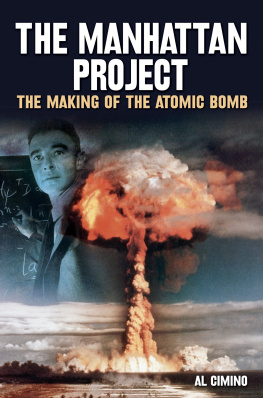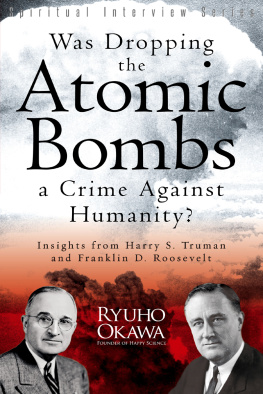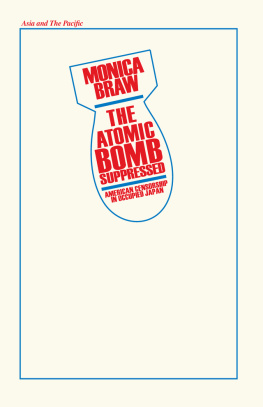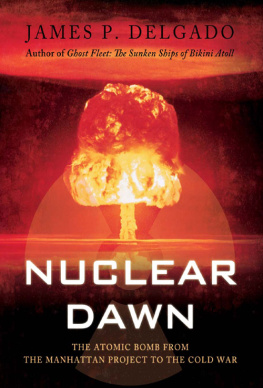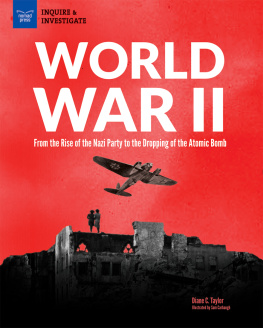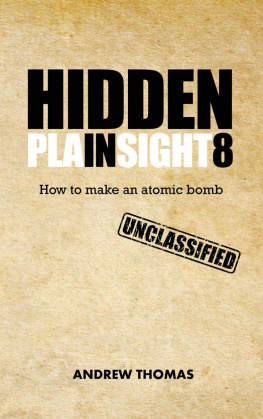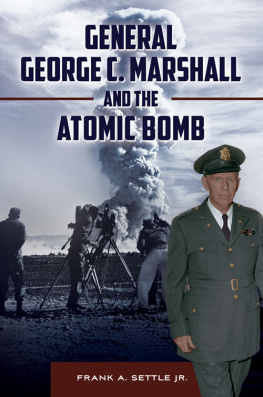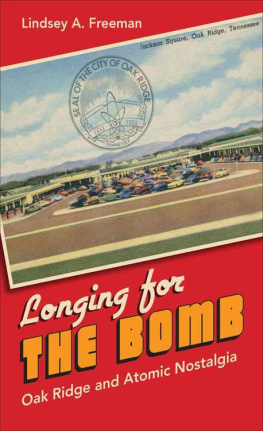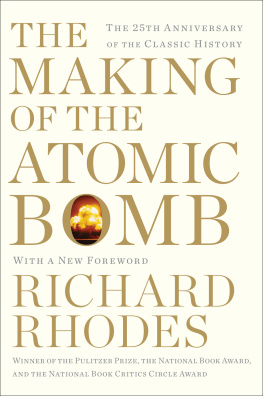None of this would have been possible had not Professor William Wuerch of the University of Guam RFK Library given me a tip on the Tinian Atomic Bomb Files. From this information, Ron Barrineau, then the Executive Director of the CNMI Council for the Humanities, helped me process a grant, which the Councils board approved, as well as an amendment processed by Paz Younis and Scott Russell that allowed me to collect the final documents.
I will always remember Dr. Dirk Anthony Ballendorf, former Director of the Micronesian Area Research Center, University of Guam, for his continuing encouragement. The staff at MARC have been very helpful throughout my efforts to publish the history of the Marianas.
A host of 509th Historians helped me collate the Atomic Bomb Files into a functional set of chronologic documents. Among them were Richard Campbell, Andy Giles, Robert Krauss, James Peterson, president of the Wendover Historical Society, and John Coster-Mullen, author of the definitive technical history of the Little Boy and the Fat Man.
I was very thankful for interviews with Paul Tibbets, Dutch Van Kirk, Morris Jeppson, Leon Smith, and Tom Classen and his daughter Charlene, as well as friend of the family Bill Satterberg.
Many Tinian B-29 historians gave much time, including Rick Feldman, Randy Harper, Nancy Samp, and Bill Howe.
From Los Alamos, I am forever indebted to Dr. Roger Meade, former archivist at the Los Alamos National Laboratories, who asked me the key question after reviewing my first draft: Who is your intended audience? Alan Carr, the current archivist at LANL has continued to be helpful. Nancy Bartlett, former president of the Los Alamos Historical Society, Heather McClenahan and Sharon Snyder.
Sylvester Jackson, at the Air Force Research Agency was very helpful.
Lara Godbille, Director; Gina Nichols, Archivist; and Kim Crowell, curator at the U.S. Navy Seabee Museum were wonderful, as were Seabee historians Edwin Foster, Joe Papalia, and William Layton and so many others.
Scott Wiley at the Smithsonian National Air and Space Museum.
Maia did an amazing job of reading all the original manuscript and helping clean up my English, as did Ruth Tighe and Ed and Ivan Propst.
So many others contributed their time and talents: Robert S. Norris, Bruce Petty, Richard Frank, D.M. Giangreco, D.F. Dvorak, James Belyea, Terry Quinn, Paul Metro, Scott W. Muselin, Mark Shrieber, Daniel Owens, Tim Kline, Garry Boothe, Randy Carspecken, Tim Kline, Jerry Beser, Jack Spangler, Jude Revere Farrell, John J. Jackson, Shayne Jarosz, John Powell, Yakir Katz, Dr. Richard Selby and the staff of the University of Southern California, Medical University, Liver Transplant Department, and my closest college friend, Tom Lonergan and his wife, Debbie.
I am honored that one of my original mentors, Dr. Robert A. Underwood, President of the University of Guam and former Guam Delegate to Congress, agreed to contribute the Foreword to this book. He has been an inspiration to me, and so many other Pacific historians.
This book would not be what it is without the dedication and professionalism demonstrated by our editor, Dr. Gordon Castanza.
Last, but far from least, I thank my ever patient wife, Carmen Muna Dela Cruz Farrell, who suffered through nights and weekends while I worked in my cave. Without her support, I could not have maintained pace and focus necessary to finish the book.
Also by Don Farrell
The Americanization of Guam: 1898-1918
The Sacrifice of Guam: 1919-1943
Liberation-1944
Tinian, A Brief History
Saipan, A Brief History
Guam, A Brief History
Rota, A Brief History
History of the Northern Mariana Islands
History of the Mariana Islands to Partition
Modern History of the Northern Mariana Islands
This second edition of Tinian and The Bomb would not have been possible without the support of the University of Guam Press for the publication of the first edition. It enabled our message of the true role Tinian played in the Manhattan Project to touch the editorial staff at Stackpole Publishing. Finally, high school teachers, college instructors, and university professors will have a tool they can use to bring Americas use of atom bombs into its proper perspective.
For their detailed, critical reviews of the 1st edition, I am very grateful to Cindy Kelly, John Coster-Mullen, Rich Frank, Cameron Reed, Bruce Petty, Heather McClenahan, Rebecca Collingsworth, John J. Jackson, Gary Boothe, Scott Muselin, Mark Schreiber, Boyd Dixon, Stuart Ruben and the many others who donated details or illustrations to help the reader better empathize with what was really happening in the Pacific of 1945.
Certainly, I am grateful to Dave Reisch, senior military history editor and his team from Stackpole for publishing the second edition. They produced an excellent book without changing the fundamentals of a single important issue I raised. I am proud to have my book among the many professional histories in Stackpoles catalog.
I would also like to mention a few other people whose sleuthing and search for historical confirmation of places related to the testing and delivery of the atom bomb components provided crucial verification: Colonel (ret.) John Anttonen, Chief of the Space Test and Operations Division, Space Development and Test Directorate, Space and Missile Center, Kirtland Air Force Base directed my editors to sources for confirmation of the atom bomb pit on Kirtland Army Air Force Base; Stephen Whitman, Administrative Coordinator of the National Museum of Nuclear History and Science; and, David Hoover, Curator and Collections Manager, National Museum of Nuclear Science & History.
However, the two men I must thank the most are my good friends, editor Dr. Gordon Castanza, and graphics artist Rommell Buenaflor. They accepted my challenge to develop the first edition from its first draft and maintained their commitment throughout the creation of the second edition with very little in the way of remuneration, except my everlasting admiration and gratitude. Men like these are few and far between.
Don A. Farrell
Marpo Heights, Tinian
J. Robert Oppenheimer (facing page) was a brilliant theoretical physicist at the University of California at Berkeley when he was brought into the Manhattan Project.
ATOMIC HERITAGE
It is unfortunate that the noble contest among 20th Century scientists to unravel the secrets of the atom collided with an ignoble race among militant totalitarians for global domination. The result was cataclysmic.
Otto Hahn, a chemist at the Kaiser Wilhelm Institute in Berlin, conducted the first experiments that demonstrated the fissioning of the uranium atom, for which he was awarded the Nobel Prize in 1944.
NATIONAL ARCHIVES AND RECORDS ADMINISTRATION (NARA)
The nuclear era was born on December 17, 1938 when the German chemist Otto Hahn and his assistant Fritz Strassmann, working at the Kaiser Wilhelm Institute for Chemistry in Berlin, published the results of their experiments -- bombarding uranium atoms with slow neutrons. In their publication, they described how the uranium atoms appeared to transmute into much lighter elements rather than nearby elements on the periodic chart. The highly respected Austrian-Swedish, theoretical physicist Lise Meitner and her nephew Otto Robert Frisch, also a professor at the Kaiser Wilhelm Institute, reviewed the Hahn - Strassman data. In a January 1939 publication, they announced that Hahn and Strassman had achieved fission, with the release of extra neutrons, each capable of splitting another atom. The world of physics sat up and paid attention. When the French physicists Frdric Joliot-Curie and his colleagues Lew Kowarski and Hans von Halban replicated the experiment, they reported in the April 22nd edition of


